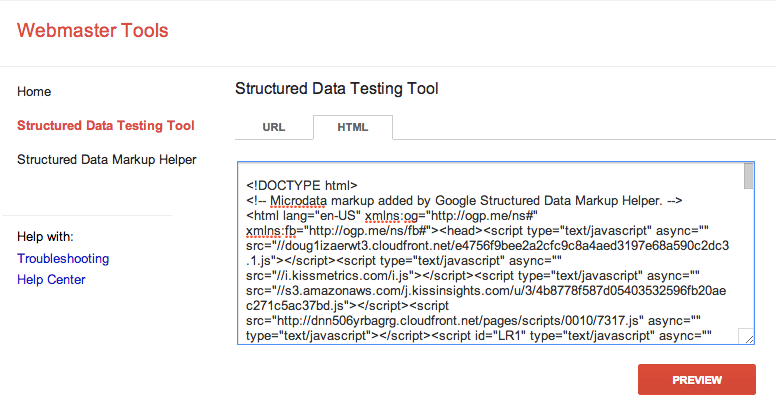
Structured data has been a hot topic in the SEO world ever since 2011, when Google, Yahoo!, Bing and Yandex created a standardized list of attributes and entities that they all agreed to support – also known as Schema.org.
However, there are still many things that people don’t know about it – and we’re here to change that. In this article, we will go through everything you need to know, starting from what is structured data and what are its formats, to where it is used, and why it’s important for SEO.
What Is Structured Data?

The first thing that needs to be established is what exactly structured data is. According to Google:
Structured data is a standardized format for providing information about a page and classifying the page content; for example, on a recipe page, what are the ingredients, the cooking time and temperature, the calories, and so on.
To put it simply, structured data is what helps Google understand the content of your page by giving it explicit clues about its meaning. Let’s take a product page from an e-commerce site as an example. Such a page will include information like:
- name
- price
- description
- features
- customer reviews
When the data is unstructured, Google doesn’t recognize which is which – this can be fixed by adding markups. If Google understands what is written on a page and what it’s about, it can include more information in the search result.
What’s more, when you structure the information on your site with a semantic vocabulary of tags (for instance Schema, or Schema.org), you are allowing the search engine bots to organize it and display it in a more creative and effective way – for example, by adding images.
Structured data is an important factor that can help you in ranking higher. As several studies proved, websites that have extensive rich snippets (created through Schema) are placed higher than those that don’t have it. This means that if you aren’t using structured data on your website, you might be missing the opportunity to land in that first place.
What Are the Formats of Structured Data?

While there are several ways in which you can markup structured data on your page, here are the most common ones used in Google:
- JSON-LD – this is the most popular structured data markup used in the page’s header.
- RDFa – also known as Resource Description Framework in Attributes; it is mostly recommended for embedment of RDF statements in HTML, XHTML, and various XML dialects. Commonly used in both the body and the header.
- Microdata – this type of structured data works with HTML5. It is used to highlight items and values on a page within the ‘itemtype’ and ‘itemprop’ HTML attributes. Usually used in a page’s body.
Why Is Structured Data Important for SEO?

Search engines such as Google or Bing encourage webmasters to use structured data. They do that by providing a set of benefits for those who have correctly implemented it. These usually included search result enhancement, and content-specific features, like:
- rich search results – styling, images, and other things that make a search result more visually appealing
- rich cards – a variation of rich search results; very similar to rich snippets, focused on providing a better mobile user experience.
- knowledge graph – information about an entity, for example, brands, objects, events, or concepts
- breadcrumbs – triggered by informational search queries and accompanied by images
- carousels – a collection of multiple rich search results
- rich results for AMP – if you want to have your Accelerated Mobile Pages appear with rich results and in carousels, you need to have structured data implemented
All these features help in improving the CTR – click-through rate – of your website and drive additional traffic. That’s because most people are more willing to click on a page that is visually appealing to them. By increasing the traffic, you are also indirectly improving your rankings.
Best Structured Data Practices

Here are some of the best practices regarding structured data:
- use the JSON-LD format whenever you can
- don’t mark up the content that is not visible on the page
- use very specific applicable type and property names
- there is no point in marking up structured data from your home page, as Google will ignore it anyway
- supplying fewer but complete and accurate properties is more important than providing every possible recommended property with less-complete or inaccurate data
Final Thoughts
Even though structured data is quite a well-known practice in the SEO world, many companies still overlook it, which is a mistake – especially if their pages are not ranking on the first page of search results in Google, as it might be exactly what they need to land there.
Without structured data, Google doesn’t understand what your page is about or how it can help people looking for specific information – after all, its crawlers are just machines, which means that in order for it to understand, the data needs to be presented clearly.
We hope that after reading this article, you have a better idea of what structured data is, the formats, and why it is an important part of SEO. Hopefully, you will also be able to put this knowledge into practice when it comes to your own website. Good luck!




